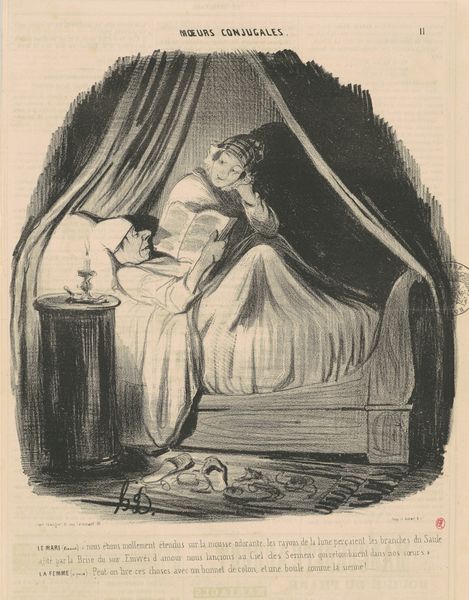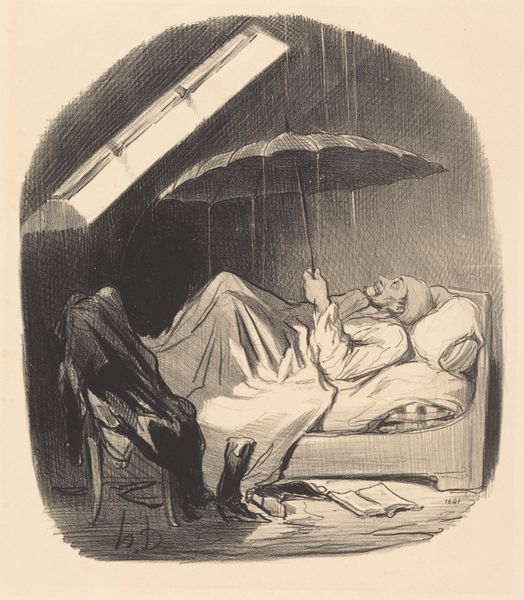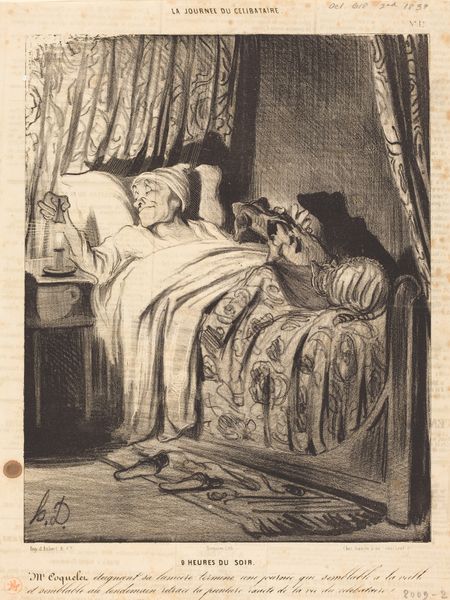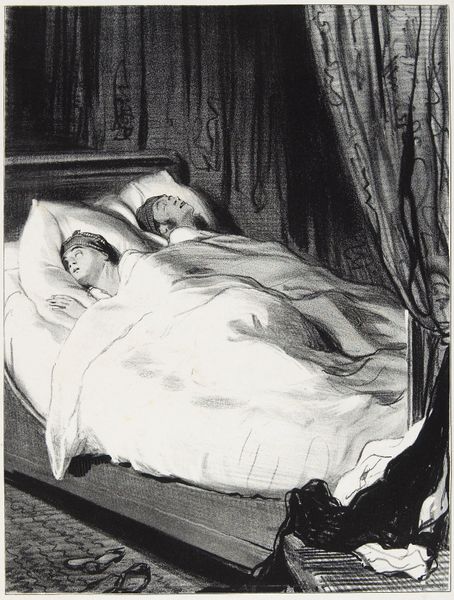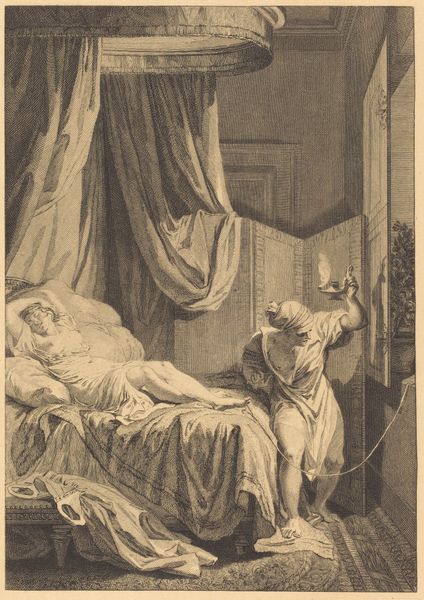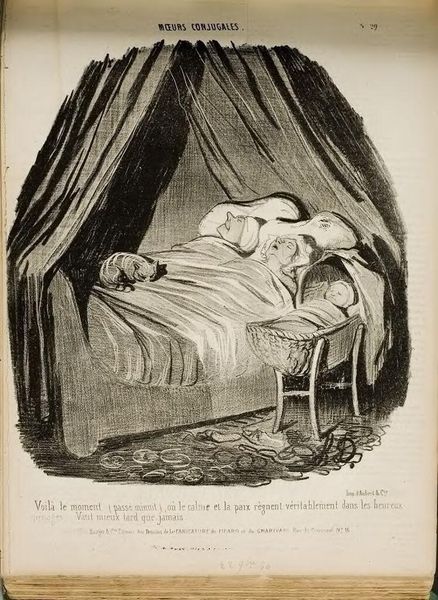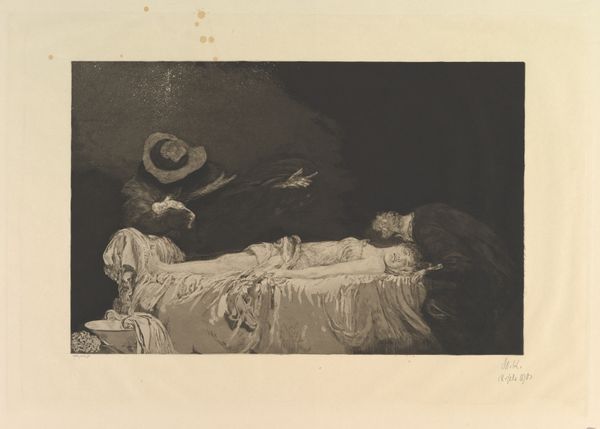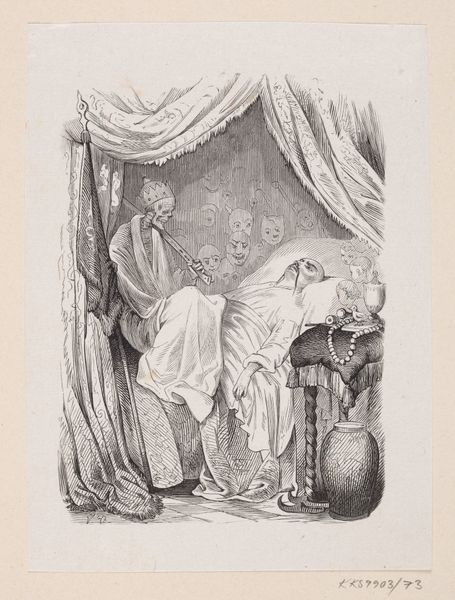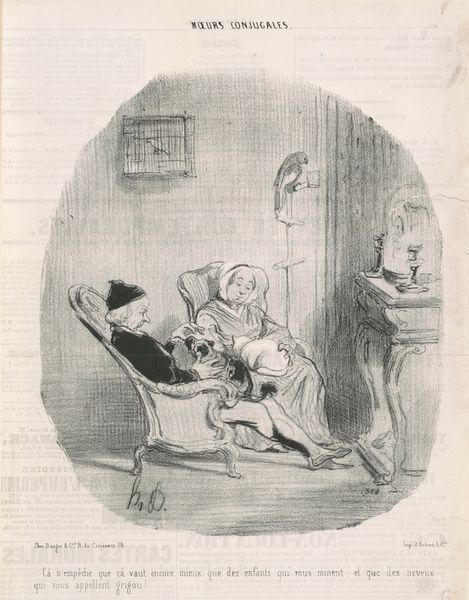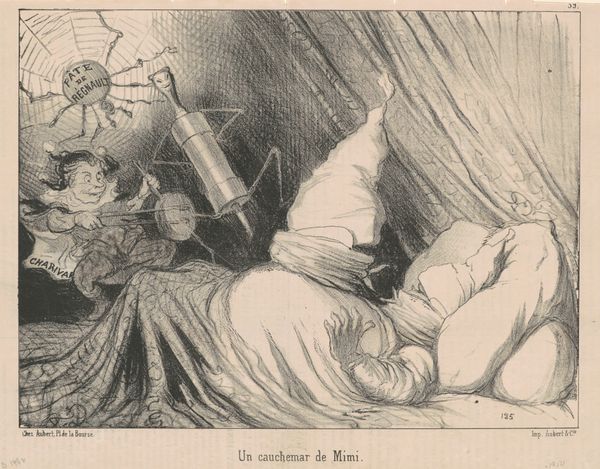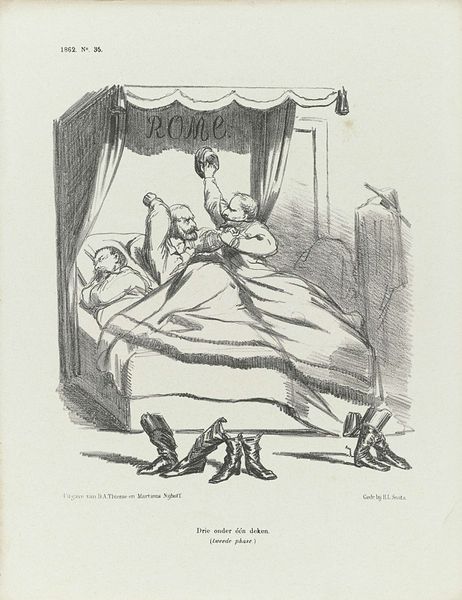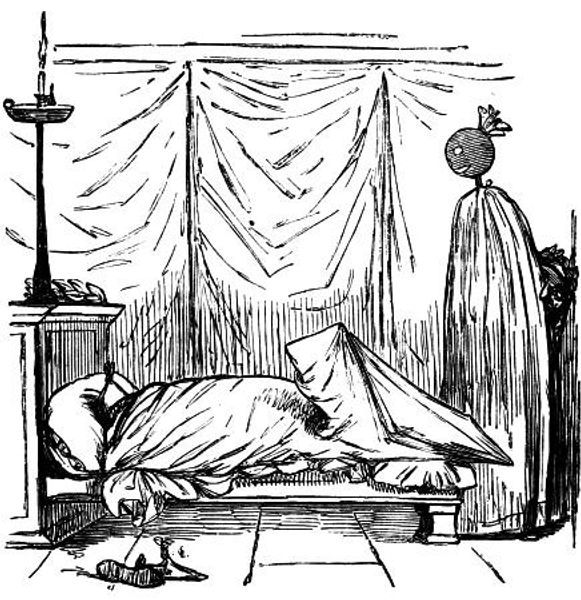
Voilà le moment (passé minuit) o∙ le calme et la paix règnent véritablement dans les heureux ménages. Vaut mieux tard que jamais. 22 - 1840
0:00
0:00
lithograph, print
#
narrative-art
#
lithograph
# print
#
caricature
#
figuration
#
romanticism
#
genre-painting
Copyright: National Gallery of Art: CC0 1.0
Editor: This lithograph, made around 1840 by Honoré Daumier, is called "Voilà le moment (passé minuit) où le calme et la paix règnent véritablement dans les heureux ménages. Vaut mieux tard que jamais.” The scene seems domestic, but there’s a palpable tension. What strikes you about this work? Curator: Immediately, I'm drawn to the materiality of this piece, beyond just being a lithograph. Think about the socio-economic context: printmaking democratized art, making social commentary accessible. Daumier wasn't creating for the elite. He was speaking to and about the emerging bourgeoisie. What can we infer about their labor and leisure from the composition itself? Editor: I see a couple asleep in a canopied bed, with a baby in a cradle, and scattered items on the floor, so there's comfort but it is a bit unkempt, too. Is the image trying to convey something about their lives? Curator: Exactly. Consider the contrast Daumier presents. Look closely at the shadows, created by the lithographic process: heavy above the bed. The image may denote leisure, or romanticism as indicated by tags, yet is it commentary on a supposed middle-class luxury bought at the expense of exhausting labor practices that keep the cycle moving, literally reproducing society in the form of their baby? What commentary do you think the text accompanying the print provides? Editor: The text feels ironic! It translates to "Here is the moment (past midnight) when calm and peace truly reign in happy homes. Better late than never.” Implying that maybe peace is never fully achieved. So Daumier used printmaking to question social realities of the bourgeoisie at the time. Curator: Precisely! Daumier utilizes this readily-available method to invite critique to then modern sensibilities. The material process inherently allowed the art to reach the laboring classes. It pushes boundaries between societal tiers that high art held rigidly, by emphasizing both accessibility through cheap production and the message of how the other half lives. Editor: I never considered the impact of lithography itself, not just the image, was part of Daumier's commentary. Thanks!
Comments
No comments
Be the first to comment and join the conversation on the ultimate creative platform.
